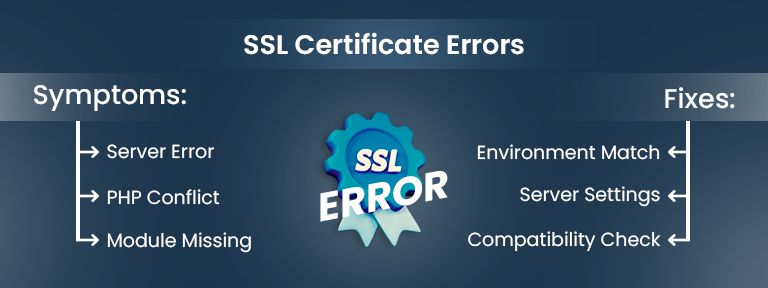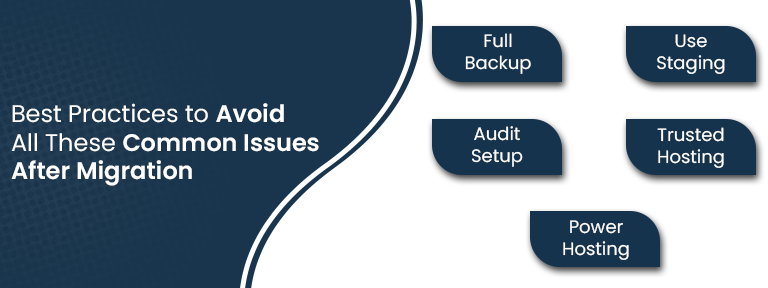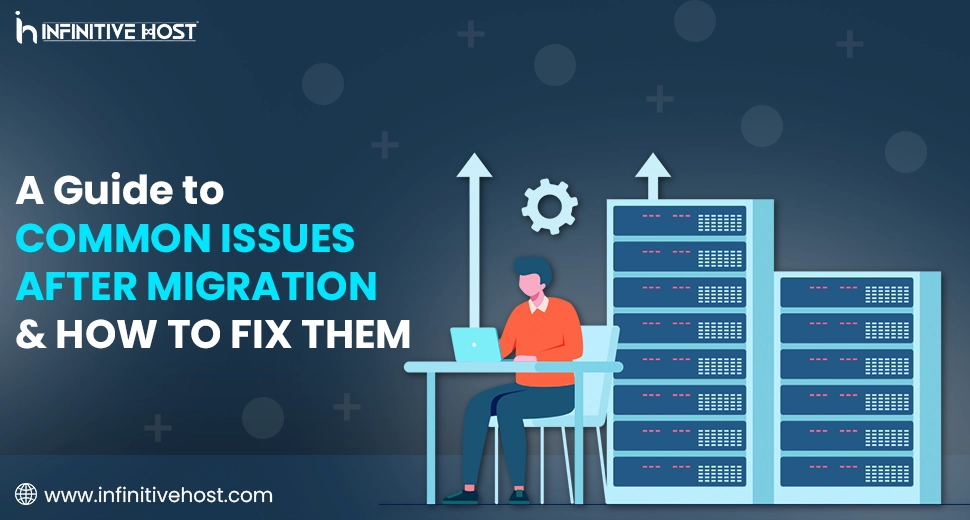A Guide to Common Issues After Migration & How to Fix Them
Both website and server migration can be a crucial and huge step in terms of growth—even if you are shifting to a new GPU dedicted server, or leveling up to a more robust dedicated server. But even with the help of thorough planning, a lot of users encounter common issues after migration that can impact site performance or visitor experience.
In this knowledge base, we’ll check out all common issues after migration, their main causes, and practical fixes to have a seamless post-migration experience—even if you are utilizing services from a platform like Infinitive Host, handling a GPU server, or transitioning your streaming platform.
Reasons Why Migration Takes Place
Before we deeply dive into the common problems related to migration, it’s necessary to know why this really happens:
- Switching hosts for enhanced performance, or 24/7 support (like Infinitive Host)
- Leveling up from shared hosting to dedicated hosting
- Shifting to a quicker or more protected hosting service provider
- Adapting infrastructure for applications that need a streaming server or AI GPU processing
1. Broken URLs & Redirect Problems
The first common issues after migration are generally broken internal links or missing redirects. This simply happens when the structure of the URL changes, but URLs aren’t redirected appropriately.
Symptoms:
- Pages not found
- 404 errors
- Drop in rankings
Fixes:
- Utilize 301 redirects for all types of changes
- Update sitemap.xml and then resubmit it to Google Search Console
If you are migrating a site simply hosted on a GPU server or shifting huge datasets for AI apps, missing URLs can break automation.
2. DNS Propagation Hold Up
After shifting your domain to the new chosen host, DNS propagation can usually take up to 48 hours of time.
Symptoms:
- Email services are not working properly.
- The website shows old content infrequently.
- The website is down for a lot of users.
Fixes:
- Wait up to almost 48 hours for DNS to completely propagate
- Utilize global DNS checker tools to track progress successfully
- Stop making huge changes at the time of propagation
This impacts users migrating between cloud hosting setups, mainly when migrating large-scale applications on a GPU server or a streaming server.
3. File & Database Corruption
File corruption at the time of data transfer is also one of the common issues after migration, mainly with huge databases or multimedia content.
Symptoms:
- Corrupted images
- Imperfect pages/posts
- Errors connecting to the database
Fixes:
- Utilize the right transfer protocols (like rsync, SFTP, or SCP).
- Check file permissions after the migration process.
- Run database repair and improvement scripts
Even if you are running a media-intensive website on a streaming server or AI-based models on a GPU hosting platform, ensuring file integrity is the main post-migration task.
4. Configuration Mismatches
Every single hosting environment is set up uniquely. Migrating from a shared host to a GPU dedicated server or a cloud server might expose configuration differences.
Symptoms:
- Error 500: Internal Server Error
- PHP version issues
- Missing modules or extensions
Fixes:
- Match the right setup of the old environment
- Check PHP/Apache/Nginx settings
- Utilize compatibility tools to find discrepancies
At Infinitive Host, these problems are proactively managed at the time of managed migrations, mainly when shifting to high-performance environments such as an Nvidia GPU server.
5. SSL Certificate Errors

After the migration process, your SSL certificate might not be reinstalled in the right way, resulting in “Not Secure” warnings.
Symptoms:
- HTTPS issues
- Broken padlock icon
- Visitors are getting security warnings
Fixes:
- Reinstall the SSL certificate manually or with the help of the hosting control panel
- Force HTTPS redirects sitewide
- Utilize different tools, like SSL Checker, to check the right installation
For organizations on a GPU dedicated server or running eCommerce platforms, fixing SSL instantly is necessary for maintaining user trust.
6. Email Service Disruption
Emails are generally overlooked at the time of migration, making this a common issue after migration, mainly for all those domains that are using third-party email services or custom SMTP.
Symptoms:
- MX records not updated
- Emails are not sending or receiving
- SPF/DKIM/DMARC records are missing
Fixes:
- Update DNS records (DKIM, MX, SPF, DMARC)
- Check SMTP settings in your CMS or mail client
- If utilizing webmail, make sure that the new server supports a similar stack
This is usually crucial for client-intensive businesses or developers choosing cloud hosting to handle client data.
7. Performance Drops or Slow Loading
Any type of change in server architecture or location can lead to temporary drops.
Symptoms:
- Slow loading speeds
- Boosted TTFB (Time to First Byte)
- Decreased PageSpeed scores
Fixes:
- Allow server-side caching
- Utilize a CDN to properly balance traffic
- Improve media and script files
Users shifting to a GPU server or streaming servers may experience performance issues if not enhanced for the new hosting environment. Hosting service providers like Infinitive Host provide pre-optimization for GPU-based apps to stop all this.
8. Analytics and Tracking Issue
The next common issue is broken or lost tracking, which impacts both performance reporting and advertising.
Symptoms:
- Zero data in Google Analytics
- Pixel tracking is not working properly
- Conversion aims not to fire
Fixes:
- Reinstall every single tracking code manually
- Try goal completions and pixel events
- Validate with the help of Tag Assistant or Meta Pixel Helper
Without analytics, you are trusting blindly, mainly if you are scaling a website utilizing GPU hosting for advanced AI or visual processing.
Best Practices to Avoid All These Common Issues After Migration

- Take complete backups (files + databases)
- Utilize a staging environment before simply going live
- Audit SSL, DNS, and tracking properly after migration
- Collaborate with a trustworthy host like Infinitive Host
- For advanced apps, consider a GPU server, cloud hosting, or dedicated server plans
Conclusion
Website migration can feel stressful—but knowing about the common issues after migration helps you prepare better and fix them quickly. Even if you are shifting to a GPU server, migrating your platform to cloud hosting, or configuring AI tasks on a GPU dedicated server, thorough post-migration audits can save you a lot of valuable time, money, and visitors’ trust.
If you are planning to shift, consider working with professionals like Infinitive Host, who provide enhanced GPU hosting, smooth transitions, and 24/7 support.


.webp)



